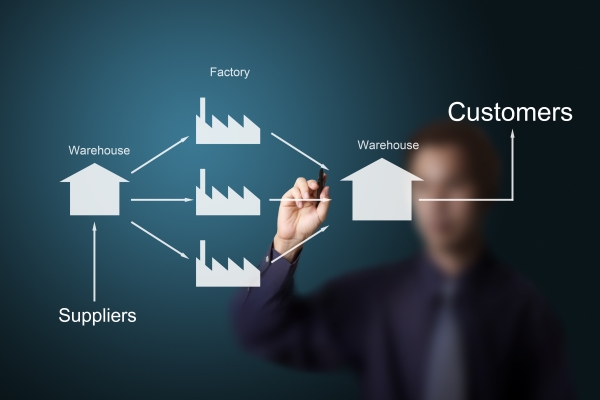Published on the 16/09/2015 | Written by Jonathan Reay

Consumer demand is colliding with a supply chain that isn’t ready and can’t keep up…
There are five key consumer trends that will have implications for the supply chain, and that brands should watch over the next 12 months. They are: 1. Give customers what they want, when they want it Consumers want tailored experiences across all touch points. They have a well-defined vision of what they need and want from their retail supply chain, and if brands don’t provide a positive experience that gives them this individual service they will shop elsewhere. Customers need same day, specified delivery windows, after-hours and weekend delivery. Similarly, where consumers want to receive their goods is changing: in-store pick-up, storage lockers, home address, pinpoint delivery to exact location, changing location mid delivery and delivery to business addresses. Businesses need to ensure they have the supply chain in place to deliver against these demands; an ill-equipped supply chain will struggle to stay ahead. 2. Reverse is just as important as forward In the retail market space, reverse logistics is becoming increasingly prevalent. Consumers want to be able to return their goods just as easily as they received them. A fully functioning reverse logistics program provides many opportunities for business improvements, from customer service, optimised returns processing and positive corporate social responsibility. It also provides positive revenue sources such as recycling, refurbishment, donations and environmental disposal or most notably, repackaging and reselling in secondary markets. So how does this need for a returns program to be just as good as a forward program affect the supply chain? Businesses have two choices – develop a program internally or outsource. Either way, an important best practice is to set the reverse program up entirely separate to forward logistics. You can leverage expertise off forward and reverse for vice versa, but it’s critical to manage each independently to ensure success for customers and the wider business. 3. Offer customers access to the “long tail” In traditional retail, a company has a physical bricks-and-mortar store where they’ll stock the best-selling products. However, consumers now require access to a “long tail” of products, and companies must provide these in a convenient and competitive manner. More and more retailers are using online and virtual inventories as a way of providing extra product options, most of which are low demand, and choice to consumers. The most successful retailer will encourage consumers to browse its “long tail” on an online catalogue in-store via a virtual inventory and then place their order in-store as well. This allows retailers to offer a range of products without having to keep them in stock– providing consumers with a wide choice, but without the inventory risk. 4. Delivering in style Shoppers want unique experiences. Part of this is the way goods are delivered. For this to work effectively, personalised supply chains will need to be developed. A unified point-of-sale inventory system will be required to enable same day deliveries, for example, and fully integrated relationships with logistics partners will be essential in getting delivery information sent to consumers. 5. Product lifecycle is shrinking The product lifecycle is shrinking and this can’t be more apparent than with smartphones, which have one of the shortest lifecycles of any product in consumer electronics. It’s getting shorter by the minute, with shelf life reducing by almost 50% since 2005 to a current average of 8-10 months. The shrinking lifecycle creates a variety of pressures on overall profitability for retailers, due to supply chain inefficiencies, promotional inequities, brand awareness and demand for a supply chain capable to fulfil the shrinking lifecycle. To overcome these challenges, retailers need to adjust to consumers’ changing habits and demands for faster access to newer products. If price erosion is not provided from vendors through the supply chain, then products will be removed from portfolios – potentially prematurely. Consider using product performance and data analysis tools, to be able to respond quickly to accelerating and declining products and optimise return on investment through improved inventory placement and analysis on portfolio performance. Retailers have to adapt to these trends both in-store and online – many highly disruptive to their current business models – to keep pace with an extraordinary rate of change. The range of profitable opportunities that exist for those retailers nimble enough to respond to the movements of a tailored supply chain are substantial. It is now much more than offering warehouses and trucks; instead, brands need a bespoke, solutions-based approach that can quickly respond to the changing landscape and keep one step ahead of competitors. Jonathan Reay is Supply Chain Director at Brightstar in Australia.





























How do you change your delivery pattern, according to the Customer demand? Will not be an additional cost involve? How to mitigate that cost?
My view is yes the provider must change the delivery plan in response to the customer demand as you suggest Lloyd.
Yes there can be additional cost of changing the delivery response; however research shows customers are prepared to pay for flexibility and choice in delivery options.
There is opportunity so save cost as well in the front end of ordering through more effective handling of customer calls and higher conversions of customer enquiries to order completion as examples.
Customers are demanding choice and the supply chain must be able to meet these demands in away that satisfies the customer need in a profitable manner.
Customers want delivery precision more than delivery speed.